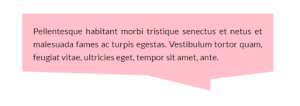Key Takeaways
- Never use another person’s content without permission; changing something by 30% does not make it non-infringing. Copyright protection applies even if there’s no visible © copyright symbol.
- Protect yourself as a web designer by ensuring your contract states that the client has the rights to use any content they provide, and that they will hold you blameless if this is not the case.
- Be cautious about the rights you assign. While a website should belong to the client, the copyright should be retained until the project is complete and payment has been received. Exceptions might occur with custom applications that have the potential to be resold.
How U.S. Copyright Law Works
The moment a work is created in a tangible form, it immediately becomes the property of the author who created it. As soon as you draw that illustration, snap that photo, or write that article, it belongs to you. As owner of that work, you can license its use to another (and even restrict how it’s used), or transfer ownership entirely. The exception to the above is “work for hire.” That’s when someone else hires you to take the photo or write the article; or when an employee creates a work within the scope of his or her employment. As a freelance designer or programmer, it’s important that your contract makes that distinction; otherwise, the work you perform could be deemed as “work for hire” in a court of law. As an independent contractor, it’s also your responsibility to use only legally-obtained content, and to make sure you’re protected if your client provides you with content he “found” elsewhere online. It’s just as easy (and tempting) to copy and paste another’s content as it is to right click and “Same Image As…” with another’s photo. Both practices can land you in hot water. If you steal someone’s content or images, your client’s site can be shut down by their ISP. According to the Digital Millennium Copyright Act, Internet service providers are legally obliged to remove infringing content hosted on their servers when the rightful owner submits a DMCA Takedown Notice. If you are their hosting provider (even if it’s a reseller hosting account), then you are legally obligated to shut the site down. Awkward. Here are three best practices to protect yourself from copyright infringement.Never, Ever Use Another’s Content without Permission
A persistent myth regarding copyrights is, if you change something 30 percent, it’s not infringement. (The same myth exists in the music industry as the 30-second rule.) If you’re not convinced this is something you should never do, read this thread. Just because an item doesn’t have a © copyright symbol doesn’t mean it’s not protected. It’s not necessary to register or indicate your work is copyrighted; doing so just makes it easier to enforce.Protect Yourself from Irresponsible or Ignorant Clients
Many people believe everything on the Internet is public domain. Some simply don’t care. We once had a client instruct us to take the design and content from a competitor’s site, claiming the competitor had originally copied his content. (We politely explained why we couldn’t.) But what about images your client provides? You don’t want to be held liable in the advent your client provides questionable content he found online. Make sure your web design contract states the client warrants that he has the rights to use any content he provides, and will hold you blameless if not.Be Careful What Rights You Assign
Unlike an illustration or photograph, I believe a website is a business tool that ought to belong to the client. That said, you ought to retain the copyright until the project is complete and you’ve been paid. At that point, ownership of the site can be transfered to the client. The exception would be a custom application that has the potential to be resold. Suppose you developed an online pizza ordering system and transferred ownership to the client. Not only could your client resell the application, you would not be able to use it on any other client’s website. The nuances of copyright law can be quite detailed, but if you follow these guidelines, you’ll keep both yourself and your client out of trouble.Frequently Asked Questions on Web Designers’ Copyright
What are the copyright laws applicable to web design?
Copyright laws applicable to web design are primarily governed by the Copyright Act of 1976 in the United States. This law protects original works of authorship, including artistic works such as graphics, text, and layout used in web design. It grants the creators exclusive rights to reproduce, distribute, and display their work. However, it’s important to note that copyright laws can vary from country to country, so it’s advisable to consult with a legal expert in your jurisdiction.
Can a web designer legally use my idea without my permission?
Generally, ideas cannot be copyrighted. Copyright law protects the expression of an idea, not the idea itself. Therefore, if a web designer uses your idea without your permission, it may not necessarily be a violation of copyright law. However, it could potentially be considered unethical or unprofessional. If you have a unique idea, it’s advisable to protect it through a non-disclosure agreement (NDA) before sharing it with others.
How can I protect my web design from being copied?
There are several ways to protect your web design from being copied. Firstly, ensure that your website includes a clear copyright notice. This serves as a reminder that your work is protected by copyright law. Secondly, consider registering your website with the U.S. Copyright Office. While registration is not required for copyright protection, it provides legal advantages in case of infringement. Lastly, use technological measures such as disabling right-click or adding watermarks to your images.
What is considered as copyright infringement in web design?
Copyright infringement in web design occurs when someone uses copyrighted elements of a website without the owner’s permission. This could include copying text, graphics, layout, or even the overall look and feel of the website. It’s important to note that even if the infringer didn’t know they were infringing, it can still be considered a violation of copyright law.
Can I use copyrighted material on my website if I give credit to the original creator?
Simply giving credit to the original creator does not automatically grant you the right to use copyrighted material. You would still need to obtain permission from the copyright owner. However, there are exceptions under the doctrine of “fair use,” which allows limited use of copyrighted material without permission for purposes such as criticism, comment, news reporting, teaching, scholarship, or research.
What is the difference between copyright and trademark in web design?
Copyright protects original works of authorship such as text, graphics, and layout used in web design, while a trademark protects brand names, logos, and other identifiers of a business. A trademark gives the owner exclusive rights to use the mark in connection with their goods or services, and helps consumers distinguish one brand from another.
What should I do if my web design has been copied?
If you believe your web design has been copied, you can take several steps. Firstly, gather evidence of the alleged infringement. This could include screenshots of the infringing website and records of when it was published. Secondly, consult with a legal expert to understand your options. You may be able to send a cease and desist letter, file a DMCA takedown notice, or even sue for damages.
Can I use images from the internet on my website?
Not all images on the internet are free to use. Many are protected by copyright law, and using them without permission could lead to legal consequences. However, there are websites that offer royalty-free or Creative Commons licensed images that can be used under certain conditions. Always check the licensing terms before using an image.
How can I legally use copyrighted material on my website?
To legally use copyrighted material on your website, you generally need to obtain permission from the copyright owner. This could involve paying a licensing fee. Alternatively, you can use material that is in the public domain, or licensed under Creative Commons or other permissive licenses. You can also consider using your own original content.
What is the role of a web designer in copyright issues?
A web designer plays a crucial role in copyright issues. They are responsible for creating original content and ensuring that any third-party content used in the design is properly licensed or falls under fair use. They should also be aware of copyright laws and educate their clients about the importance of respecting intellectual property rights.
 John Tabita
John TabitaFormer owner and partner of web firm Jenesis Technologies, John is currently Director of Digital Strategy at Haines Local Search, a company providing local search marketing solutions to SMBs, including print and Internet Yellow Pages, web design, and local SEO. When not working or spending time with his family, John offers great sales and marketing advice on his blog, Small Business Marketing Sucks. When not working or spending time with his family, John offers great sales and marketing advice on his blog, Small Business Marketing Sucks.




